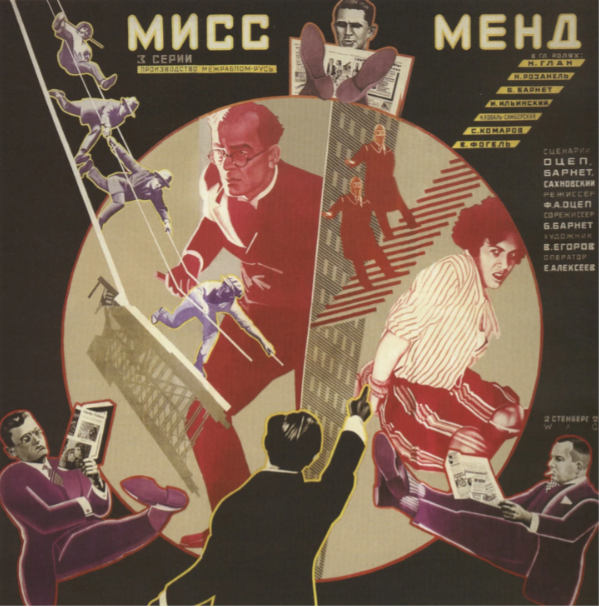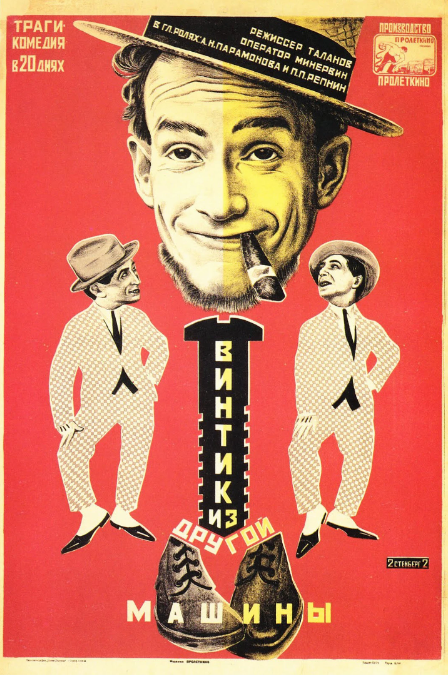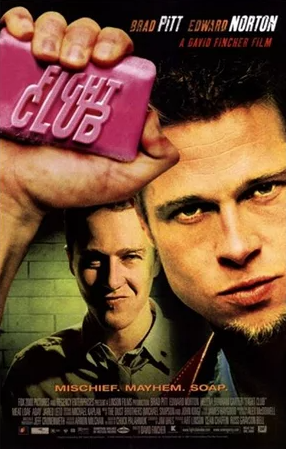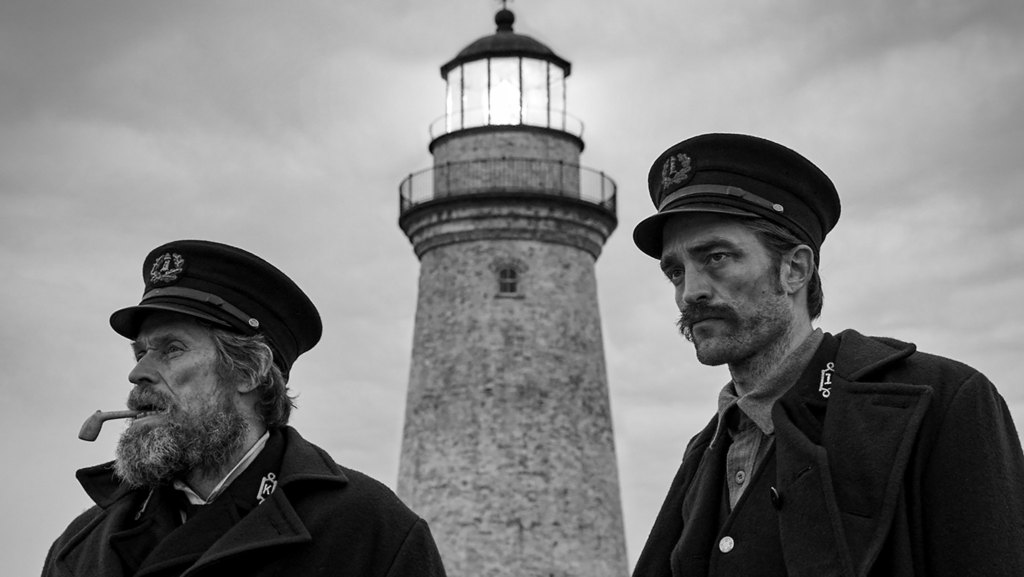Examples of classic Soviet construtivist films:



Examples of classic Soviet construtivist films:



COMPARATIVE STUDY (20%)
COLLABORATIVE PROJECT (35%)
Narrative and technical conventions:
The Left Bank, including directors such as Agnès Varda, Alain Resnais, and Chris Marker, focused on more experimental film making, often making documentaries, as well as identifying with the political left and saw film similar to other arts such as literature. Whereas the right bank, including directors such as François Truffaut, Jean-Luc Godard, and Claude Chabrol, were the more financially successful group, associated with “Cahiers du Cinema”, and followed more of the traditions of classic cinema.
Foley sound is an essential element in film and television production. It’s the art of creating sound effects that are synchronized with the action on the screen. Foley sound is created by a foley artist who uses various props and materials to create sound effects that match the visuals.

The foley artist uses a variety of props and materials to create sound effects. For example, they might use a pair of shoes to create the sound of footsteps, or they might use a coconut shell to create the sound of a horse galloping. The foley artist must be creative and resourceful to create the right sound effect for each scene.
Foley sound is recorded separately from the dialogue and other sound effects. This allows the sound editor to mix the different sound elements together to create a cohesive soundtrack. Foley sound is also used to enhance the realism of the scene. For example, the sound of a door opening or closing can help to create a sense of space and depth.
In conclusion, foley sound is an essential element in film and television production. It’s the art of creating sound effects that are synchronized with the action on the screen. Foley sound is created by a foley artist who uses various props and materials to create sound effects that match the visuals. Foley sound is an important tool that helps to enhance the realism of the scene and create a cohesive soundtrack.
Narration in film is an essential element that helps to tell the story. It’s the voice that guides the audience through the plot, characters, and themes. Narration can be delivered in different forms, such as voice-over, dialogue, or text. The purpose of narration is to provide context, exposition, and insight into the story.
Voice-over narration is the most common form of narration in film. It’s a technique where a character’s voice is heard over the action on the screen. Voice-over narration can be used to introduce characters, set the scene, or provide commentary on the story. It’s a powerful tool that can add depth and complexity to the film’s themes and characters.
Dialogue is another form of narration that can be used in film. It’s a conversation between two or more characters that can reveal their personalities, motivations, and relationships. Dialogue can also provide exposition and context to the story.

Text can also be used as a form of narration in film. It’s a technique where written words are displayed on the screen. Text can be used to provide context, set the scene, or provide commentary on the story. It’s a powerful tool that can add depth and complexity to the film’s themes and characters.
In conclusion, narration in film is a powerful tool that can add depth and complexity to the story. It can be delivered in different forms, such as voice-over, dialogue, or text. The purpose of narration is to provide context, exposition, and insight into the story. Whether it’s a voice-over, dialogue, or text, narration can help to create a compelling and engaging film that resonates with the audience.
Claire Denis’ visually striking ‘Beau Travail’ and David Fincher’s sardonically incendiary ‘Fight Club’ from the same year of 1999, both attempts to criticise the traditional structures of gender, specifically the dangers of toxic masculinity onto the men which perform it. Both feature films target the fragile nature of hyper-masculine performativity, and the perils which result from enacting such a mindset. As a result of this overarching theme, I have heavily referenced queer theory and Judith Butler’s ‘Gender Performativity’ theory to aid my comparison between these two films. Furthermore, I have decided upon these two films for comparison as the films were produced and distributed under different cultural contexts. ‘Fight Club’, an American film distributed under the massive conglomerate of 20th Century Fox, is a stark contrast to ‘Beau Travail’s distribution under the minor Parisian distribution service of ‘Pyramide Films’; the alternative countries these films were produced in also furthers the bridge between these two film’s cultural contexts. Likewise, the oppositional genders of Fincher and Denis allows the subject of masculinity to be presented from the male and female points of view.


In conclusion, the psychological horror sub-genre hasn’t changed more than it has evolved in recent times. Directors seem to aim toward creating a more vivid image of what their film’s protagonists suffer through to their audience, and hones in on the true capacity of what the human mind is able to tolerate before breaking, and what horrific acts seemingly ordinary people can be capable of.
F.W. Murnau’s Nosferatu and Robert Eggers’ 2019 The Lighthouse are both distinctive fantastical horror films. Thee narrative of both films are driven by themes psychological, from the claustrophobic, swelling chaos of The Lighthouse to the Thanatophobia (fear of death) created from Nosferatu. These films have been chosen as they were made in contrasting contexts. Nosferatu was a German film made in the troubled Weimer period of the 1920s Germany and The Lighthouse being an independent American film made recently featuring big A-List actors such as Willem Defoe and Robert Pattinson, so the differences in social and economic tropes can be clearly seen. F.W Murnau’s film follows its protagonist Thomas Hutter who is sent by his “master” to finalise a deal with the mysterious Count Orlok. He then quickly finds out that Count Orlok is a vampire who has his targets set on our protagonists’ wife. The Lighthouse features a slow-burn story which induces a claustrophobic feeling as two lighthouse keepers become stranded. Tensions between the two rises as they covet the light at the point of the tower, and the story’s climax comes when both the light housekeepers meet their demise.

Robert Weine’s 1922 film The Cabinet of Dr Caligari is a strong German Expressionist film that went on to influence the neo-Noir film genre and spawn many films that take inspiration from this such as Batman Returns and more prominently Mulholland Drive, they both stand out due to their unique stylisation, from the abnormal dimensions of the furniture in Dr Caligari to the abstract architecture of the manor in Batman Returns. These films have been chosen as they were made in contrasting contexts, Caligari being made in a different political and historical context when compared to Batman due to Caligari being made during the Weimar Republic years of 1918-33 whereas Batman Returns was made during 90’s America where the spread of communism had been stopped and everyone was celebrating the win of capitalism, so the differences in genre tropes can be clearly seen. Robert Weine’s film follows a somnambulist who makes deadly predictions that are horrifying. Later, a man and his fiancée go through a terrible ordeal because of one of his predictions. Whereas in Burton’s film, Max, an entrepreneur, and criminal Penguin team up to wreak havoc in Gotham City, Batman decides to stop them. Catwoman’s alter ego, Selina Kyle, seeks revenge on Max for trying to kill her.
Point 3 – Representations
Throughout both of the films’ runtimes, many of the themes and representations are akin to one another, such as the representation of the human condition, familial structures, the roles of men and women, and how they’re represented appropriately to their eras.
In Kubrick’s The Shining, the narrative follows a nuclear family of three and demonstrates how the past often haunts people in their futures, and just how easily people can fall back into alcoholism and addiction, and what it does to their family and those around them – even outside of a haunted hotel with a traumatic history. This same theme follows similarly within Eggers’ film, the two men falling into alcoholism and delirium as the weeks go by, resulting in them behaving more violently and aggressively toward each other.
In both films, the human condition is a key factor that drives the plotline forward, particularly within their male characters. The mental state of both Jack Torrance – Jack Nicholson’s character – and Ephraim Winslow – Robert Pattinson’s character – are presented as increasingly fragile as each film progresses, part of this being the lack of help they received in light of their behaviours – as up until recent times, far from when both films were set, the role of a man within society was to be independent, aggressive, and dominant. Because of this, it was seen as ‘weak’ to be vulnerable, and so the men in both stories decline further into these traits, becoming more erratic until they finally break down into a murderous rage in the climaxes of their respective stories. Another part of this is the lack of understanding the men have for themselves, and the uncertainty that comes with it – something that’s played upon by the catalyst of the paranormal – the only solace they find being what both Torrance and Winslow find to be their ‘answers’ – alcohol and the lighthouse’s beacon – which they’re told to avoid and stay away from.
Women in the two films are also represented similarly, in the sense that they’re consistently objectified for the male protagonists’ sexual pleasure – such as the woman in the bathroom and the mermaids. Liesbet Van Zoonen theorises that gender is a societal construct, and argues that its meaning varies dependent on cultural and historical context – and evidently so; the stereotypes of males and females are highly reinforced throughout the plotlines. However, due to the the horrific acts the male characters in these films commit, it could be argued that it spits out the opposite image back into society – and that these types of worldviews can often lead to a sense of superiority over people that these characters deem as weaker.